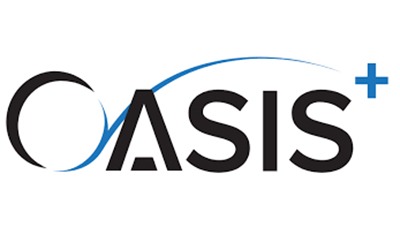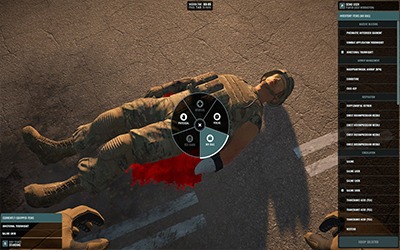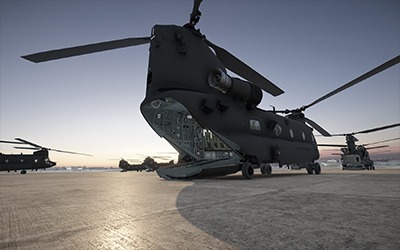The unique project utilizes teleteaching for burn care procedures and supports medical training scenarios within the U.S. Army’s Synthetic Training Environment.
January 05, 2021: Orlando, FL – Engineering & Computer Simulations (ECS) will be exhibiting its Burn Care Escharotomy VR Haptics Trainer at the International Meeting on Simulation in Healthcare (IMSH) from January 15 – 19, in Los Angeles, CA. Developed as part of a Phase II Small Business Innovation Research (SBIR) project for the Defense Health Agency, this project, Advanced Haptics Development to Support Medical Simulated Training Environments, includes the design and development of haptics-based virtual reality (VR) training systems to support combat medicine within the U.S. Army’s Synthetic Training Environment (STE) and allows for potential expansion to the broader medical community.
Led by Shane Taber, ECS Vice President of Operations, Orlando, this research project has been designed as an extension of Tactical Combat Casualty Care Simulation (TC3Sim) and has been implemented using the baseline of multimodal haptic-based VR research scenarios including the application of tourniquets and needle chest decompression interventions developed from TC3Sim. This project features a multiplayer teleteaching capability for the synchronous training of students while an instructor can be observing and providing increasing levels of intervention to guide students on the procedure. The system also supports a single-player experience for new users or those requiring refresher training and includes a VR solution.
ECS partnered with HaptX to integrate its DK2 haptic glove system into the VR-based training scenario for escharotomy. Upon completing development, the team successfully conducted a usability study at Mayo Clinic Jacksonville for future research and development and to capture feedback on the technology and training approach based on a prototype training scenario.
Within the scenario, users are presented with a simulated burn patient, with which they can directly interact to perform the escharotomy. Running in a VR scenario including interaction with the patient’s leg, marker, scalpel, iodine, and cleaning pads, the trainee completes the procedure, individually or with a live instructor’s assistance. Next, the player may independently review their overall performance or while collaborating with an instructor regarding feedback and areas for improvement.
Waymon Armstrong, ECS CEO says: “We are proud to share this innovative medical training at IMSH 2022 as well as with our Soldiers within the Army’s STE systems. The integration with haptic devices offers a sense of touch and natural interactions within the immersive environment which strengthens the quality of the training and the users’ retention. When applied in almost any medical scenario, this enhanced training can provide all healthcare professionals – in the government or industry sectors – with the tools they need to potentially save more lives.”
ECS will be exhibiting the Burn Care Escharotomy VR Haptics Trainer, the TC3Sim Combat Application Tourniquet, and Needle Chest Decompression VR Haptics Trainer at IMSH in Booth 731 with HaptX.
Taber adds: “We’re excited to contribute to this body of research related to human performance and training effectiveness for both the military and medical communities. By collaborating with HaptX and Mayo Clinic, this type of innovative work advances high-fidelity VR training by combining the state-of-the-art hardware and software solutions.”
About IMSH
Presented by the Society for Simulation in Healthcare annually, IMSH is a scientific conference that explores the latest innovations and best practices in healthcare simulation and provides resources that healthcare professionals need to advance their skills, impact change in delivery systems and practice, and to improve patient safety. imsh2022.org/



